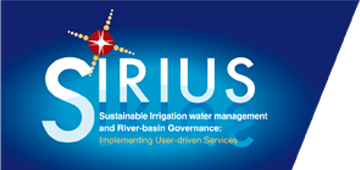ROMANIA: Cazasu – North Braila Terrace
Terasa Brăilei complex land reclamation scheme, with a total area of 71,240 ha, has been the first large irrigation scheme built in the Câmpia Brăilei region, between 1967 and 1974.
This irrigation scheme has two main water intake locations at river Danube, for its two integral parts: Pisc Brăila (km 165+900 on the Danube) for Terasa Brăilei Nord (21374 ha) and Gropeni (196+000 on the Danube) for Terasa Brăilei Sud (41580 ha).

Main agricultural crops cultivated in the area are: maize (50%); wheat and successive crops (16%), lucerne (18%); sugar beet (6%); sunflower (7%); vegetables and other crops (3%).
Cazasu irrigation scheme:
It is a part of the Terasa Brăilei Nord scheme, with a total area of 21,373 ha.
Its boundaries are:
Bucharest-Galaţi railway line to the south and east; CD 1 irrigation open canal to the west, and Terrace area line to the north.
Water needed for irrigating the agricultural crops is taken from the Danuve, using the Pisc- Brăila floating pumping station, at a total flow of 15cm3/s.
The pumped volumes of water are conveyed through the CA II supply canal situated in the floodplain area, 29 km in length, to the scheme’s distribution network.
Our main water challenges:
• Modernization of the irrigation infrastructure administered by both ANIF–National Agency for Land Improvements (pumping stations, re-lift pumping stations, supply canals, corresponding hydraulic structures, IT networks and automation facilities) and the existing Water User Organizations (pressure pumping stations, buried pipe networks, ancillary equipment etc.);
• Availability of modern on-farm irrigation equipment (centre-pivot, linear move etc.) to be purchased by farmers’ groups and associations;
• Devising practical irrigation water cost payment mechanisms that are capable of acting as incentives to farmers to promote and encourage the use of irrigation (including through alternative means of providing targeted subsidies).



